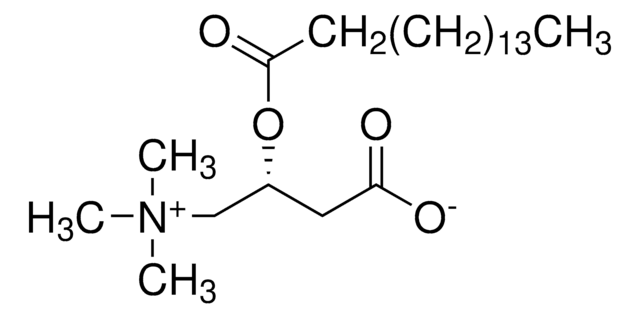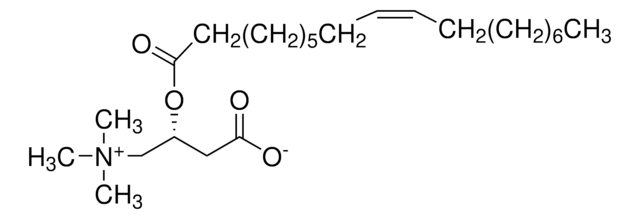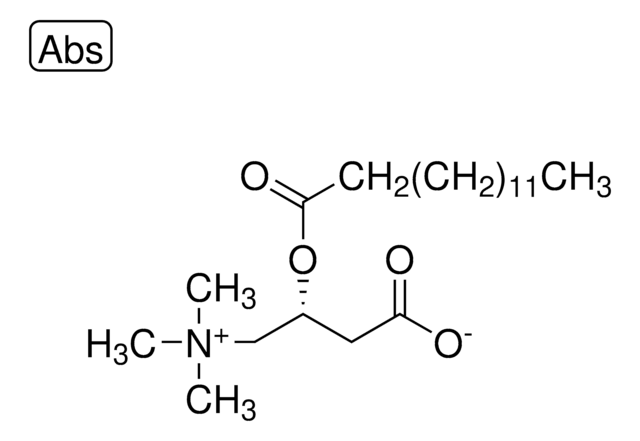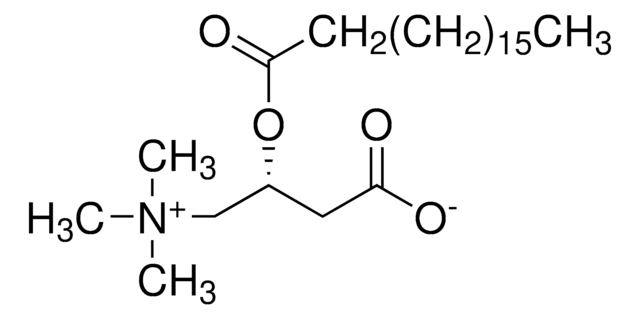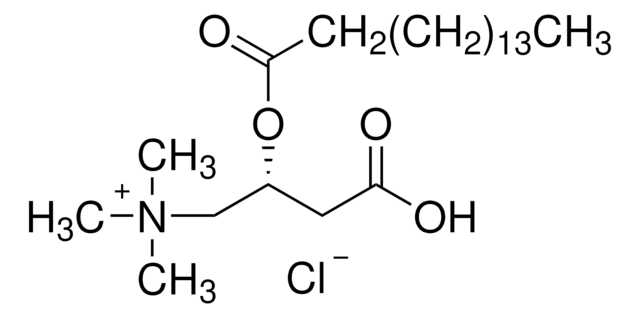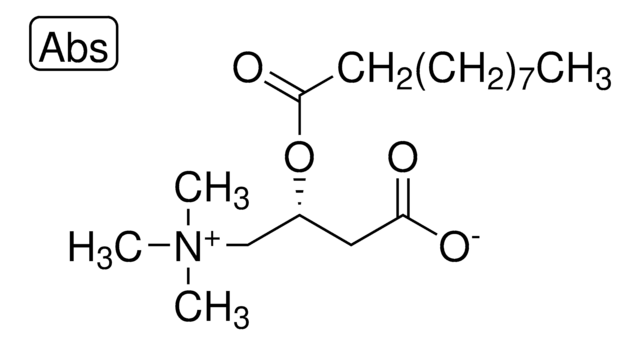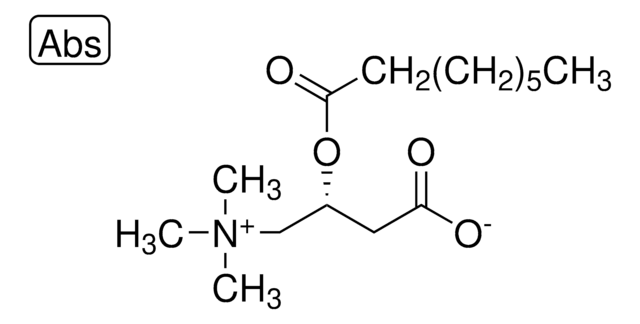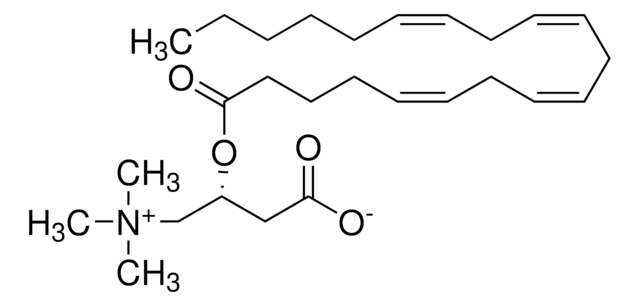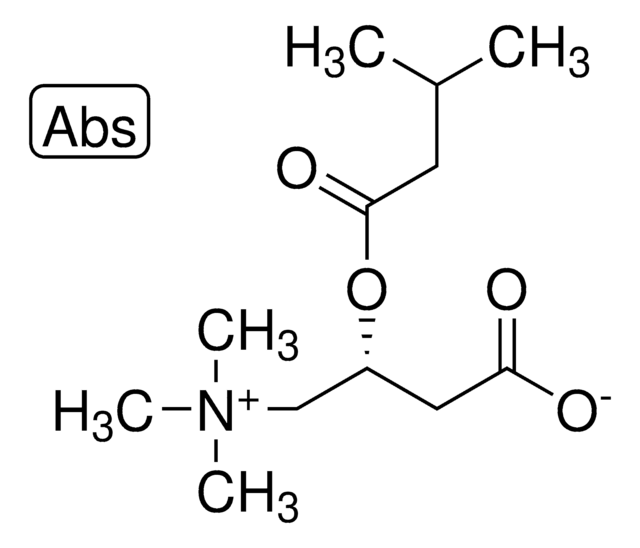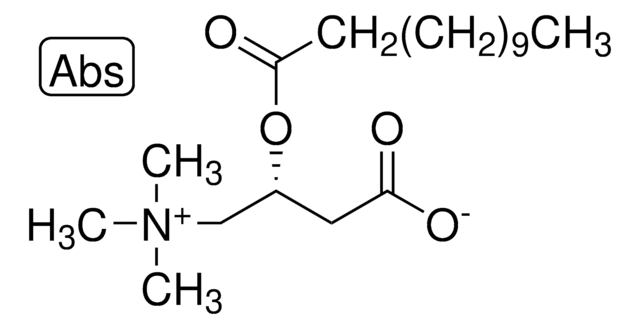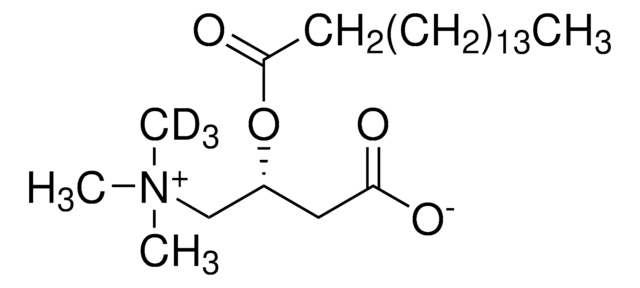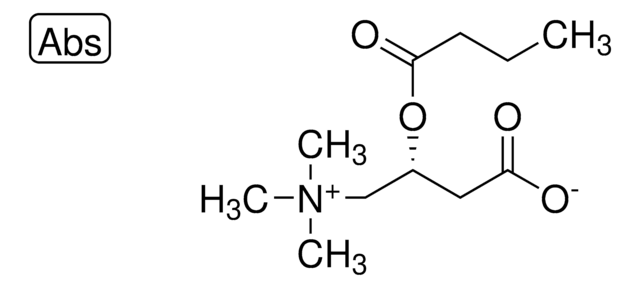61229
Stearoyl-L-carnitine
≥97.0% (TLC)
Sinonimo/i:
(2R)-3-Carboxy-N,N,N-trimethyl-2-[(1-oxooctadecyl)oxy]-1-propanaminium inner salt, L-Carnitine octadecanoyl ester, C18-Carnitine, Octadecanoyl-L-carnitine
About This Item
Prodotti consigliati
Livello qualitativo
Saggio
≥97.0% (TLC)
Attività ottica
[α]/D -15±2°, c = 1 in methanol
Impurezze
≤10% water
Temperatura di conservazione
2-8°C
Stringa SMILE
C[N+](C)(C)C[C@H](OC(CCCCCCCCCCCCCCCCC)=O)CC([O-])=O
InChI
1S/C25H49NO4/c1-5-6-7-8-9-10-11-12-13-14-15-16-17-18-19-20-25(29)30-23(21-24(27)28)22-26(2,3)4/h23H,5-22H2,1-4H3/t23-/m1/s1
FNPHNLNTJNMAEE-HSZRJFAPSA-N
Cerchi prodotti simili? Visita Guida al confronto tra prodotti
Azioni biochim/fisiol
Codice della classe di stoccaggio
11 - Combustible Solids
Classe di pericolosità dell'acqua (WGK)
WGK 3
Punto d’infiammabilità (°F)
Not applicable
Punto d’infiammabilità (°C)
Not applicable
Scegli una delle versioni più recenti:
Certificati d'analisi (COA)
Non trovi la versione di tuo interesse?
Se hai bisogno di una versione specifica, puoi cercare il certificato tramite il numero di lotto.
Possiedi già questo prodotto?
I documenti relativi ai prodotti acquistati recentemente sono disponibili nell’Archivio dei documenti.
I clienti hanno visto anche
Il team dei nostri ricercatori vanta grande esperienza in tutte le aree della ricerca quali Life Science, scienza dei materiali, sintesi chimica, cromatografia, discipline analitiche, ecc..
Contatta l'Assistenza Tecnica.